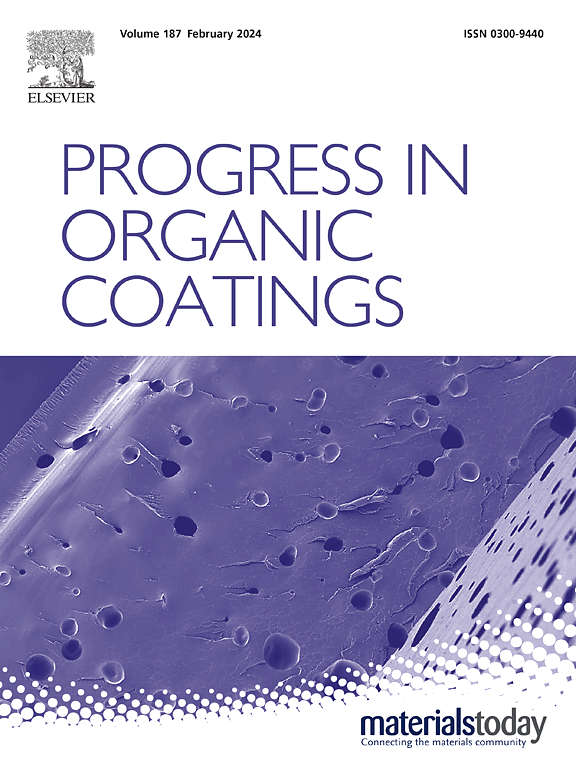微波能实现高性能金属效应粉末涂料
IF 6.5
2区 材料科学
Q1 CHEMISTRY, APPLIED
引用次数: 0
摘要
金属效果粉末涂料(MPCs)由基粉涂料(BPCs)和金属颜料(MPs)制成,具有金属外观和基材保护功能。与溶剂型金属效果涂料(SMC)相比,其零 VOC 排放和更低的成本推动了市场的增长。然而,MPC 通常添加 2.0 wt% 的 MPs,而 SMC 中 MPs 的添加量一般在 5.0 wt% 以上。MPC 中相对较低的 MPs 添加量限制了其进一步发展。MPCs 面临的挑战是喷涂过程中 MP 与 BPC 分离造成的金属效果不稳定。使用摩擦能和热水夹套的传统粘合方法往往无法在 MP 含量较高时保持稳定。本研究探索了以微波能作为加热源的粘合方法,结果表明微波粘合的 MPC 具有更好的金属效果和更高的稳定性,尤其是在 8.0 wt% MP(铝薄片)的高金属效果下。这项研究为高浓度 MP 的 MPC 提供了一种前景广阔的方法。本文章由计算机程序翻译,如有差异,请以英文原文为准。
High-performance metallic-effect powder coatings enabled by microwave energy
Metallic-effect powder coatings (MPCs), made of base powder coatings (BPCs) and metallic pigments (MPs), offer a metallic appearance and substrate protection. Their market growth is driven by zero VOC emissions and lower costs, compared to solvent-borne metallic-effect coatings (SMCs). However, MPCs typically add <2.0 wt% MPs, whereas the addition of MPs in SMCs is generally above 5.0 wt%. The relatively low MPs addition in MPCs restrict their further development. The challenge for MPCs is the instability of the metallic effect caused by the separation of MPs from the BPCs during the spraying. Traditional bonding using frictional energy and hot-water jackets often fails to maintain stability with higher MP contents. This study explores microwave energy as heating source for bonding method, showing that microwave-bonded MPC exhibit better metallic effects, and higher stability, especially at a high metallic effect of 8.0 wt% MP (Al flakes). This study offering a promising approach for MPCs with high MP concentrations.
求助全文
通过发布文献求助,成功后即可免费获取论文全文。
去求助
来源期刊

Progress in Organic Coatings
工程技术-材料科学:膜
CiteScore
11.40
自引率
15.20%
发文量
577
审稿时长
48 days
期刊介绍:
The aim of this international journal is to analyse and publicise the progress and current state of knowledge in the field of organic coatings and related materials. The Editors and the Editorial Board members will solicit both review and research papers from academic and industrial scientists who are actively engaged in research and development or, in the case of review papers, have extensive experience in the subject to be reviewed. Unsolicited manuscripts will be accepted if they meet the journal''s requirements. The journal publishes papers dealing with such subjects as:
• Chemical, physical and technological properties of organic coatings and related materials
• Problems and methods of preparation, manufacture and application of these materials
• Performance, testing and analysis.
 求助内容:
求助内容: 应助结果提醒方式:
应助结果提醒方式:


